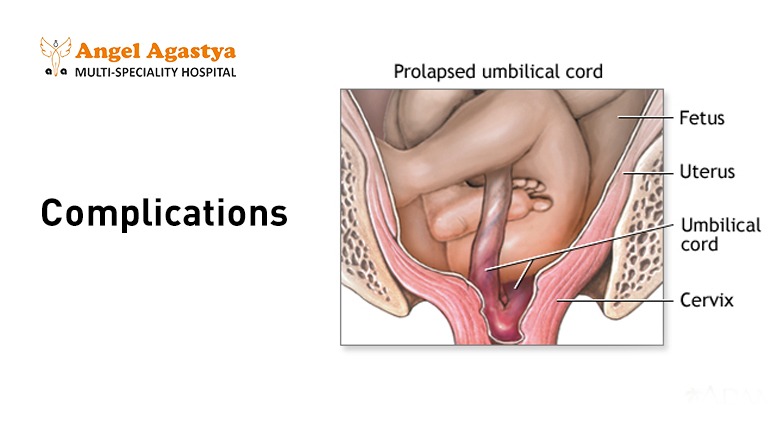Understanding Breech: A Cause for Concern
For most moms, the image of childbirth involves a head-first arrival. It’s the natural order of things. But sometimes, our little ones have plans of their own. Some babies choose a breech position, settling in the womb with their feet or bottom first.
While not inherently dangerous, a breech presentation does carry potential risks for both mother and baby compared to a head-first delivery.

This section will explain the different types of breech presentations:
- Frank Breech: The baby’s legs are fully extended above their head.
- Complete Breech: The baby’s buttocks are closest to the birth canal, with knees bent and feet tucked up by their ears.
- Footling Breech: One or both of the baby’s feet are positioned closest to the birth canal.
Discuss the possible causes of breech position:
- Limited space in the uterus due to multiples, a low-lying placenta, or a small amount of amniotic fluid.
- Uterine abnormalities or a previous C-section scar.
Acknowledge the emotional rollercoaster you might experience:
This could include fear of the unknown, disappointment about your birth plan, or a strong desire to maintain control over your delivery experience. It’s perfectly normal to feel this way, and we’ll address these emotions throughout the blog.
Why C-Sections for Breech? Weighing the Risks
Doctors prioritize the safety of both mom and baby during delivery. Here’s why C-sections are often recommended for breech births:

- Complications: During a vaginal breech delivery, the baby’s head, the largest part, might emerge last. This can lead to the umbilical cord getting compressed, depriving the baby of oxygen. Additionally, the baby’s body might get stuck in the birth canal, increasing the risk of injuries to both mother and baby.
- Difficulties with Vaginal Delivery: The birthing canal is simply designed for a head-first delivery. A breech baby’s body might not fit through the canal as easily, leading to a prolonged and potentially risky labor.
- Doctor Expertise: Vaginal breech deliveries require specific training and experience not all doctors possess. In some situations, a doctor might not feel comfortable performing a vaginal breech delivery and recommend a C-section to ensure the safest outcome.

This section will explore these points in detail, using clear language and citing medical sources from reputable organizations like the American College of Obstetricians and Gynecologists (ACOG). It will also acknowledge the emotional impact of a potential C-section and validate your feelings. You might have envisioned a natural birth, and this news might feel like a setback. Remember, a C-section can still be a safe and positive birthing experience.
Alternatives to C-Sections: Exploring Options
While C-sections are often the safest route for breech births, some situations might allow for a vaginal delivery. This section will discuss:

- External Cephalic Version (ECV): This is a procedure where a healthcare professional attempts to manually turn the baby head-first from the outside of your abdomen. It’s usually performed around 36-37 weeks of pregnancy and has a success rate of around 50%.
- Eligibility for Vaginal Breech Delivery: Several factors can influence whether a vaginal breech delivery is considered safe. These include the type of breech presentation, your health history (previous C-sections, etc.), and the availability of a doctor experienced in vaginal breech deliveries.
- The Importance of Informed Consent: Having a C-section doesn’t automatically mean giving up on your dream of a natural birth. There are ways to create a natural C-section experience, minimizing interventions. Understanding the risks and benefits of both C-sections and vaginal breech deliveries allows you to participate actively in your birth plan discussion with your doctor.
Empowered Delivery: Planning and Communication
Knowledge is power! Here’s how to create a birth plan that reflects your preferences and ensures a safe delivery, even with a breech presentation:

- Open Communication with Your Doctor: Schedule a dedicated appointment to discuss your concerns and explore all options, including the possibility of an ECV, the risks and benefits of C-sections and vaginal breech deliveries, and your preferences for pain management during a C-section. Ask questions, express your fears and desires, and be an active participant in the decision-making process.
- Gather Information: Don’t be afraid to do your own research! Reputable medical websites like the ACOG website or the National Institutes of Health (NIH) offer a wealth of information on breech presentations, ECV, C-sections, and vaginal breech deliveries.
- Advocate for Yourself: It’s your body, your baby. Don’t hesitate to voice your concerns and work collaboratively with your doctor to create a birthing plan that feels right for you. Remember, a good doctor will listen to your preferences and work with you to achieve the safest and most positive birthing experience possible.
Why Doctor Avoid Normal Delivery In First Pregnancy If The Baby Is In Breech Position?
First pregnancies often have a higher risk of complications during labor and delivery, and adding the complexity of a breech presentation increases these risks further. Additionally, there is a concern that the inexperienced pelvic floor muscles of a first-time mother may not adequately accommodate the breech delivery, potentially increasing the risk of birth injuries to both the baby and the mother. Therefore, doctors may opt for a cesarean section to minimize risks and ensure the safest possible outcome for both mother and baby.
Summary:
Imagine the excitement bubbling over as you picture your newborn’s arrival. But a wrench gets thrown into your perfectly planned birth vision – your doctor informs you that your little one is breech, positioned bottom-first in the womb. Panic might start, but take a deep breath, mama! This blog is here to be your guide. We’ll delve into the reasons why doctors often recommend C-sections for breech births, explore alternative birthing options, and empower you with the knowledge to navigate this situation.
You’ll discover the factors influencing delivery choices, safety considerations, and steps to have an informed discussion with your doctor about your birth plan. So, breathe easy, embrace this new twist in your pregnancy journey, and get ready to welcome your precious bundle of joy, no matter how they decide to enter the world!
FAQs (Tech/Medical Aspects):
- What are the long-term health risks associated with C-sections?
While C-sections are a safe and common procedure, there can be some potential risks, such as increased risk of infection, bleeding, and future complications with pregnancies. However, these risks are generally low, and advancements in medical care have significantly reduced them.
- Can certain prenatal exercises help turn a breech baby?
There’s limited scientific evidence to definitively say that specific exercises can turn a breech baby. However, some doctors might recommend certain positions or gentle exercises to encourage the baby to move head-first. Always discuss these with your doctor before attempting them.
- How common are successful ECV procedures?
The success rate of ECV procedures is around 50%. Several factors can influence the success rate, such as the type of breech presentation and the amount of amniotic fluid.
- What are the recovery times for C-sections compared to vaginal breech deliveries?
Recovery from a C-section typically takes longer than vaginal delivery recovery. Expect to experience some pain and discomfort at the incision site for several weeks. Vaginal breech deliveries can also involve longer recovery times compared to a normal vaginal delivery due to potential tearing or other complications.
- Are there any risks associated with vaginal breech deliveries, even with a skilled doctor?
Yes, even with a skilled doctor, vaginal breech deliveries carry some risks for both mother and baby, including increased risk of injury to the baby or the mother’s birth canal. This is why C-sections are often recommended for breech births.
- Can I still have a natural birth (without pain medication) if I had a C-section?
yes! if you had a C section in last pregnancy, and the gap is now about 4-5 years and some other parameters are accurate. there are good chances for a natural delivery. this process is called VBAC ( vaginal birth after C section)
- What are some signs of labor to watch for, regardless of the delivery method?
Signs of labor include regular contractions, your water breaking, vaginal bleeding or spotting, and increased pressure in your pelvis. Be familiar with these signs and contact your doctor if you experience them.
- What emotional support resources are available for mothers facing a potential C-section?
Many hospitals offer support groups specifically for mothers facing C-sections. You can also find online communities and forums where you can connect with other mothers who have had C-sections. Talking to a therapist can also help process your emotions and adjust to the idea of a C-section.
- How can I prepare for a C-section to minimize anxiety?
Education is key! The more you know about the C-section procedure, the less anxious you might feel. Talk to your doctor about what to expect during surgery and recovery. Having a birth plan that outlines your preferences can also help you feel more in control.
- What are some tips for a healthy postpartum recovery after a C-section?
- Rest and take it easy: Your body needs time to heal. Don’t try to do too much too soon.
- Pain management: Take your pain medication as prescribed by your doctor.
- Incision care: Keep your incision clean and dry to prevent infection. Follow your doctor’s instructions for incision care.
- Pelvic floor exercises: These exercises can help strengthen your pelvic muscles and aid in recovery.
Remember: This blog is intended for informational purposes only. Always consult your doctor with any questions or concerns about morning sickness or your pregnancy in general.


Hi my family member I want to say that this post is awesome nice written and come with approximately all significant infos I would like to peer extra posts like this
thank you
Hello there, just became aware of your blog through Google, and
found that it’s truly informative. I’m gonna watch out for brussels.
I will appreciate if you continue this in future.
Many people will be benefited from your writing.
Cheers! Najlepsze escape roomy
thank you
Greetings! I know this is kind of off topic but I was wondering if you
knew where I could locate a captcha plugin for my comment
form? I’m using the same blog platform as yours and I’m having difficulty
finding one? Thanks a lot!
There’s definately a lot to learn about this issue. I like all the points you have made.
Thanks. We are glad you like our work.